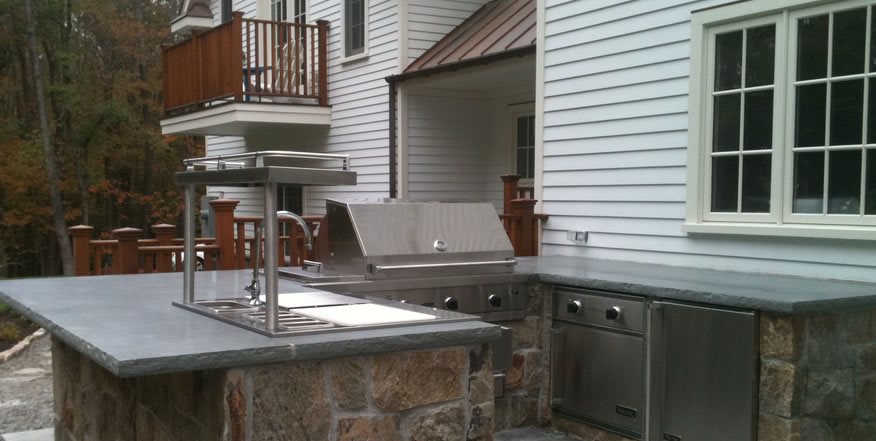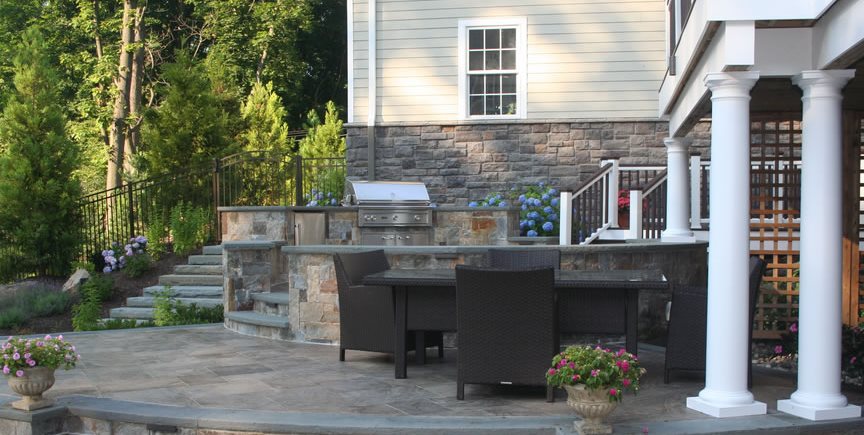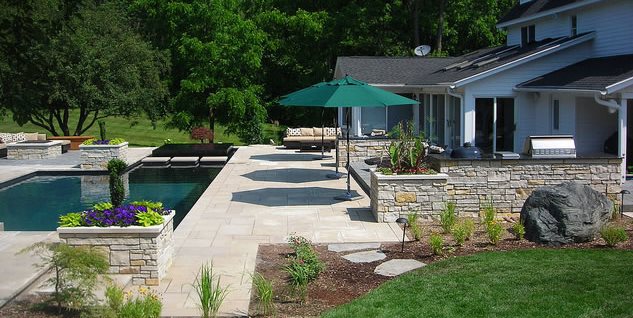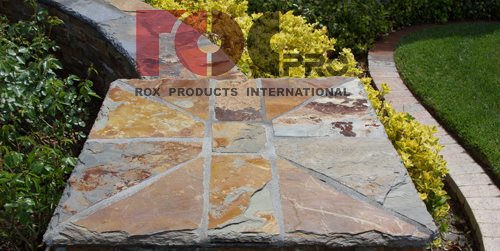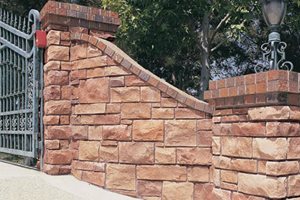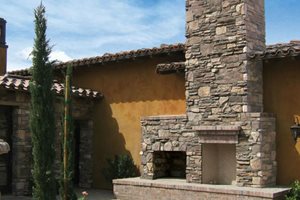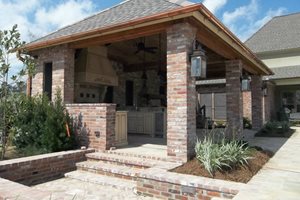Thin Stone Veneer
How thinner, lighter veneer can save you moneyWhat differentiates thin stone veneer from other cut stone veneers is the thickness of the piece, which affects costs and veneer installation. Thin veneer averages about one inch thick, about the same as a Mexican Saltillo paver. It is a fraction of standard stone veneer which is about 3 to 5 inches thick. Thinner means lighter, which impacts costs in three ways. Lighter stone can be shipped further for less money. Lighter stone does not require special structural support. Thinner stone is easier for less skilled workers to use, so you may find the landscape contractor can install it in house rather than subcontracting the work to a stone mason.
- Pro Tip: Today we can even create an authentic dry stone look with thin veneer.--David Croteau, Stoneyard.com
When cultured stone was first produced, it was in response to problems created by the weight of real stone. With thin stone veneer, the weight issue is solved with natural stone. Thin veneer is also helpful in scenarios where larger stone veneer is not easy to adapt to tight fitting projects. Therefore some landscape contractors may be well staffed to install thin veneer where they might find challenges with standard veneers.
You can buy thin stone veneer as individual pieces or in prefabricated real stone panels. This is perhaps the best way to install ledgestone that is very thin, because assembling even a small piece of masonry using inch-thick ledgestone pieces is incredibly tedious. When the thin ledgestone is already installed onto backing, it’s a matter of cutting these foot square pieces to fit into the space provided.
Thin Stone Veneer vs. Manufactured Stone Veneer
| Thin Stone Veneer | Manufactured Stone Veneer | |
|---|---|---|
|
Weight |
The low cost of shipping thin stone veneer means that it's affordable to obtain stone from anywhere, enlarging the local supply considerably. |
This has placed pressure on the manufactured stone industry which bases a good deal of its value on lighter weights. |
|
Availability |
Not all stone types are available in thin veneer cuts. |
Manufactured stone is famous for a wide range of colors and patterns. |
|
Cobble edges |
Thin stone veneer does not adapt to tapered round edges derived from the outside slice of a field stone for the rustic cobble wall. |
Manufactured stone offers a wide range of rounded cobble wall patterns and colors. |
|
Panels |
For ledgestone or stackstone patterns, panels are necessary to make these an affordable installation. |
Manufactured stone produces all its ledgestone and stackstone in multilayered units or panels. |
|
Accessories |
Thin stone veneer that is not available with matching corners, capstones and other masonry accessories may force you to choose from another stone type to finish a job. |
With manufactured stone, each pattern and color is always produced with all accessories. |
Caveats
Thin stone veneer used outdoors requires more care than interior applications because water penetration can cause serious problems. Waterproofing is essential, and your contractor must be fully aware of this need because thin stone veneer is so often used on wood frame structures. Thin veneer joints are only as deep as the stone itself, which is very shallow compared with other types of veneer. Should there be inadequate or irregular mortar applications, water may seep in behind the veneer. If this moisture should freeze, the stone may be displaced or even cracked. Take special care whenever thin veneer is specified for raised beds, retaining walls and other applications where the masonry is in direct contact with earth and runoff.

 Backyards
Backyards
 Front Yards
Front Yards
